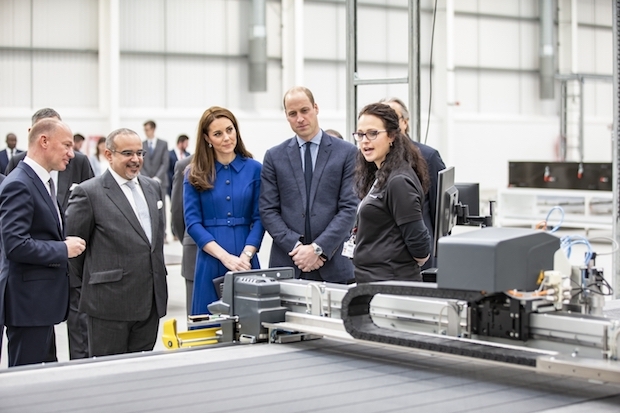The opening of McLaren’s new production facility in Rotherham may have been rich in pomp and ceremony – a 3,850 horsepower convoy of supercars racing to meet the more sedate Royal fleet of Bentleys, for example – but behind the showmanship there are vital lessons for UK manufacturing. There are also important lessons for a government that has staked the economy’s future on an Industrial Strategy targeting just four grand challenges: future mobility, clean growth, artificial intelligence and an ageing population.
The first lesson is that the UK has a great future in high-value manufacturing. The second, especially in the case of automotive and aerospace, is that this requires industry to literally ‘lose weight’ (using composites and new materials), and possibly people (robotics, automation and artificial intelligence/data analytics). The final lesson is that all this happens best when three key partners learn to collaborate: industry, government and the research and innovation talent inside our universities.
All too often, however, this doesn’t happen. Industry can be skeptical about academics. They inhabit a different world, talk a different language, and breathe a more rarified air. Academics can be equally sniffy about industry and the profit motive. And the Treasury can be skeptical about both.
In the case of Rotherham, however, all three of these ingredients are well blended. Take McLaren and lightweighting. Research shows that a 10% reduction in vehicle mass improves fuel consumption by 7%, and every litre of fuel saved reduces CO2 emissions by 2.6kg. Advanced carbon fibre composite materials have higher strength to weight ratios, better chemical and heat resistance and greater design flexibility compared to conventional vehicle construction materials.
If the UK – through this partnership between industry, government and research – could develop processes that significantly reduce the cost of using these advanced materials in vehicle structures, this would not only benefit the car industry, but other industrial sectors such as wind energy, sporting goods and aerospace. The airframe of the Boeing 787 Dreamliner, for instance, is close to 50% carbon fibre reinforced plastic and other composites: a weight saving of 20% compared to traditional aluminium designs.
McLaren have been in the ‘power’ business for decades. Now its CEO, Mike Flewitt, wants to win the ‘weight race.’ But his company cannot do that on its own. As he said on Wednesday, getting to this position has ‘been an incredible team effort.’
That means getting alongside some of the most talented composite research engineers in the world at the University of Sheffield Advanced Manufacturing Research Centre (AMRC); engaging with responsive local councils to find the right location close to the capabilities of the AMRC; and working with national government funding agencies such as Innovate UK to help finance and direct research that will enable them shed pounds, improve productivity, maintain quality and win the ‘weight race.’
This is not a return to Government picking industrial winners, as in the 1970s. It is about listening to industry and supporting research institutions (such as the AMRC and other members of the High Value Manufacturing Catapult network) to develop and de-risk technologies that will enable UK firms to compete against the best and against the low wage economies of the Far East and China.
That is why China is so interested in the Catapult network. Senior Chinese officials know they must invest heavily in robotics, automation and Artificial Intelligence. They talk of a five to ten-year window to make the leap from cheap labour to smart production. This makes it imperative for the UK government to invest in research and innovation. The commitment to meet a target of 2.4% of GDP invested in UK R&D within ten years, and a longer-term goal of 3%, is breathtakingly bold.
But now is not the time for caution or timidity. With a Brexit deal lurching towards what might be an end-game, more and more firms may choose to bring manufacturing back onshore like McLaren, as they seek to get closer to their supply chains and the research partners who can insulate them against the competition.
For this to happen, governments will increasingly look to university researchers to work with industry to deliver impact measured against the national R&D target. The founders of the AMRC understood this two decades earlier when they realised what can happen when industry, translational research and governments collaborate: with each partner having significant skin in the game the founders believed that this would create what they called a ‘win, win, win’ model. They were right.
McLaren, Boeing and Rolls-Royce are three wins. Who will be next?
Professor Keith Ridgway is Founder and Executive Chair of the University of Sheffield’s Advanced Manufacturing Research Centre (AMRC)






Comments